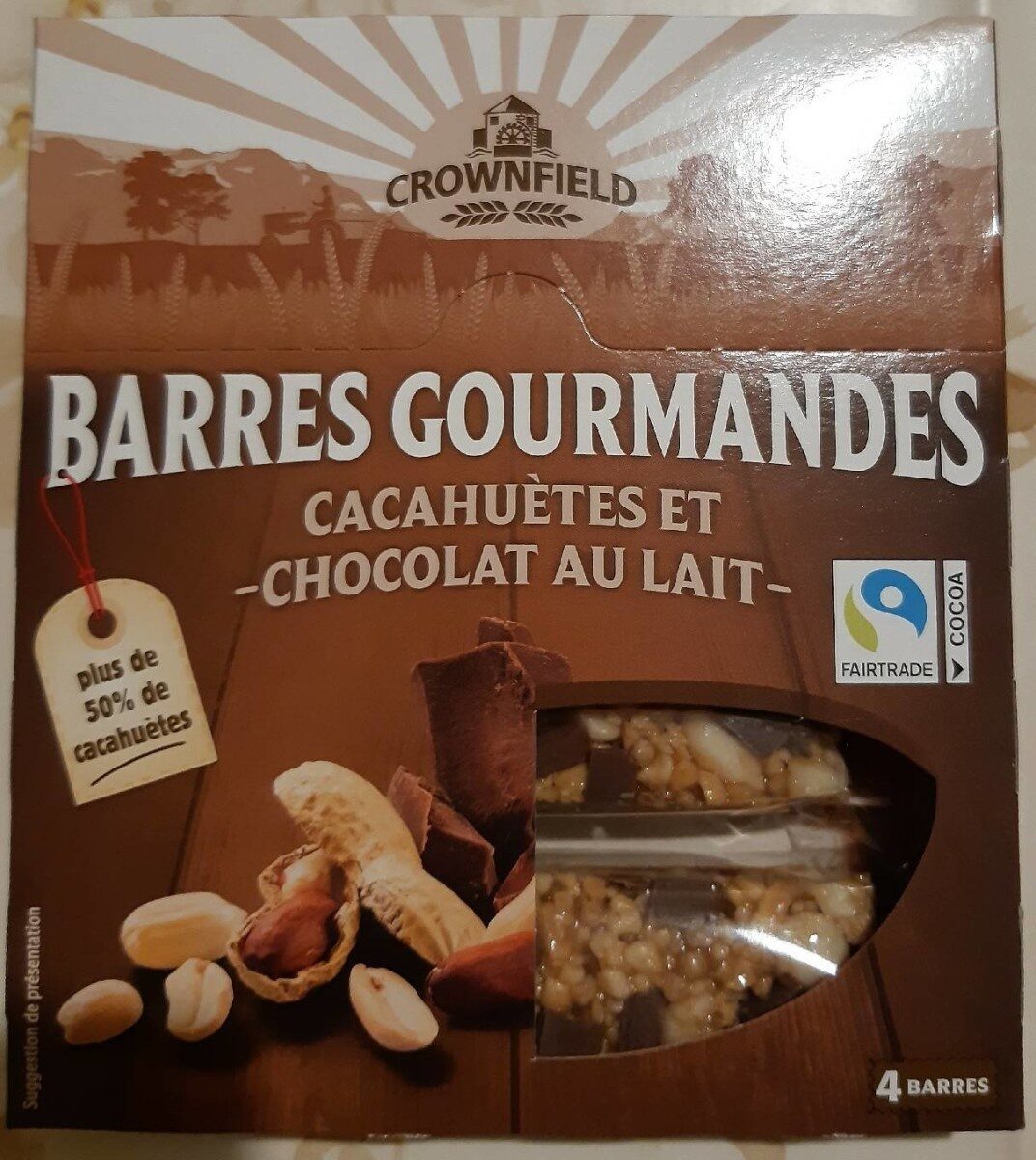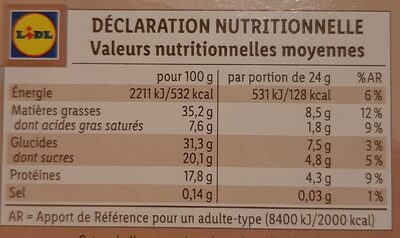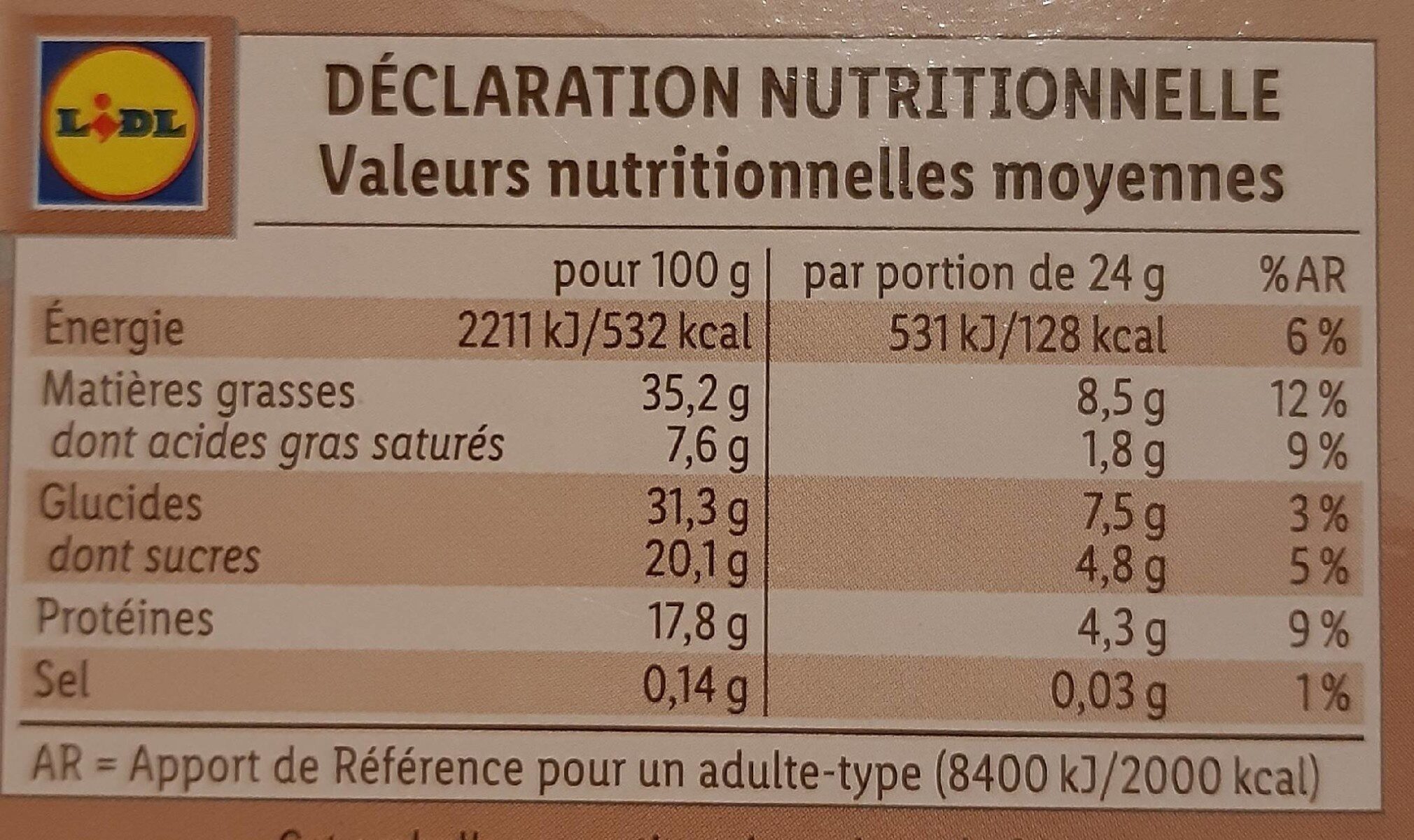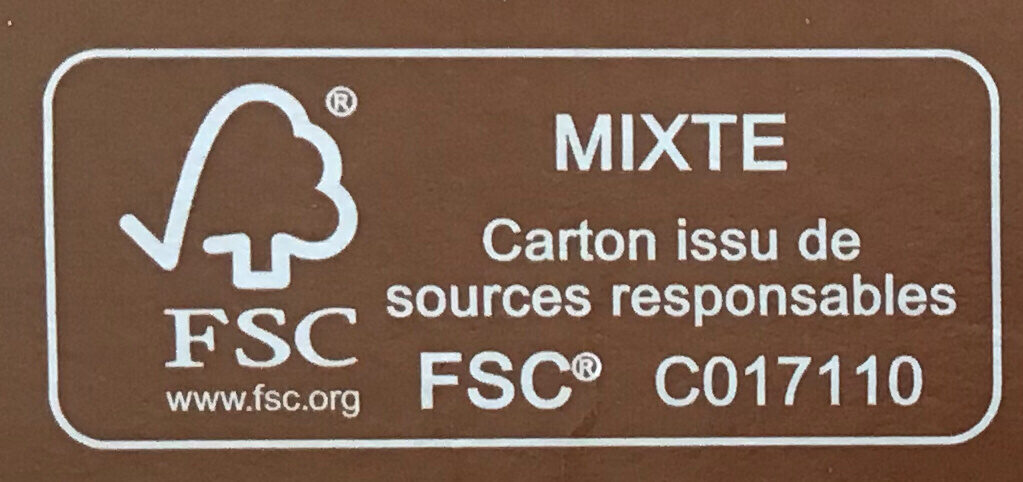Barrette arachidi e cioccolato al latte - crownfield - 96 g, 4 barres de 24 g
Codi de barres ambigu: aquest producte té un codi de barres amb número de circulació restringit per a productes d'una empresa. Això significa que diferents productors i botigues poden utilitzar el mateix codi de barres per a diferents productes.
×
Aquesta pàgina del producte no està completa. Podeu ajudar a completar-la editant-la i afegint-hi més dades a partir de les fotos ja disponibles, o fent-ne més amb l'aplicació de androide o iPhone / iPad. Gràcies!
×
Codi de barres: 20983512
Nom comú: Barres avec cacahuètes et chocolat au lait
Quantitat: 96 g, 4 barres de 24 g
Empaquetament: Cartó, fr:FSC Mixte, fr:Film plastique
Marques: Crownfield
Categories: Aliments i begudes amb base vegetal, Aliments amb base vegetal, Snacks, Aperitius dolços, Fruits secs i derivats, Barretes, Barres de cereals, en:Chocolate cereal bars, en:Nut bars, en:Peanut bars
Etiquetes, certificacions, premis:
Agricultura Sostenible, Certificat UTZ, Cacau certificat UTZ, en:Fair trade cocoa
Codi de traçabilitat: FSC-C017110
Botigues: Lidl
Matching with your preferences
Report a problem
Fonts de dades
Producte afegit per kiliweb
Última modificació de la pàgina del producte per roboto-app.
La pàgina del producte, també editada per aleene, ecoscore-impact-estimator, giadabianchetti, musarana, openfoodfacts-contributors, org-app-elcoco, packbot, raturibot, thaialagata, yuka.UnFZRFRxa2JsdGtvZ3NBVDV5THpvT3QxNTUyT1cyS1NHN0k5SUE9PQ, yuka.sY2b0xO6T85zoF3NwEKvlkMeeN-Asy3GM0LRm22g2sasd7y0MeNcudD7Gao, yuka.sY2b0xO6T85zoF3NwEKvlnNnCYDwgQCbZyfgvkCk7e3SMY3jRsxP2rbDMKg.













